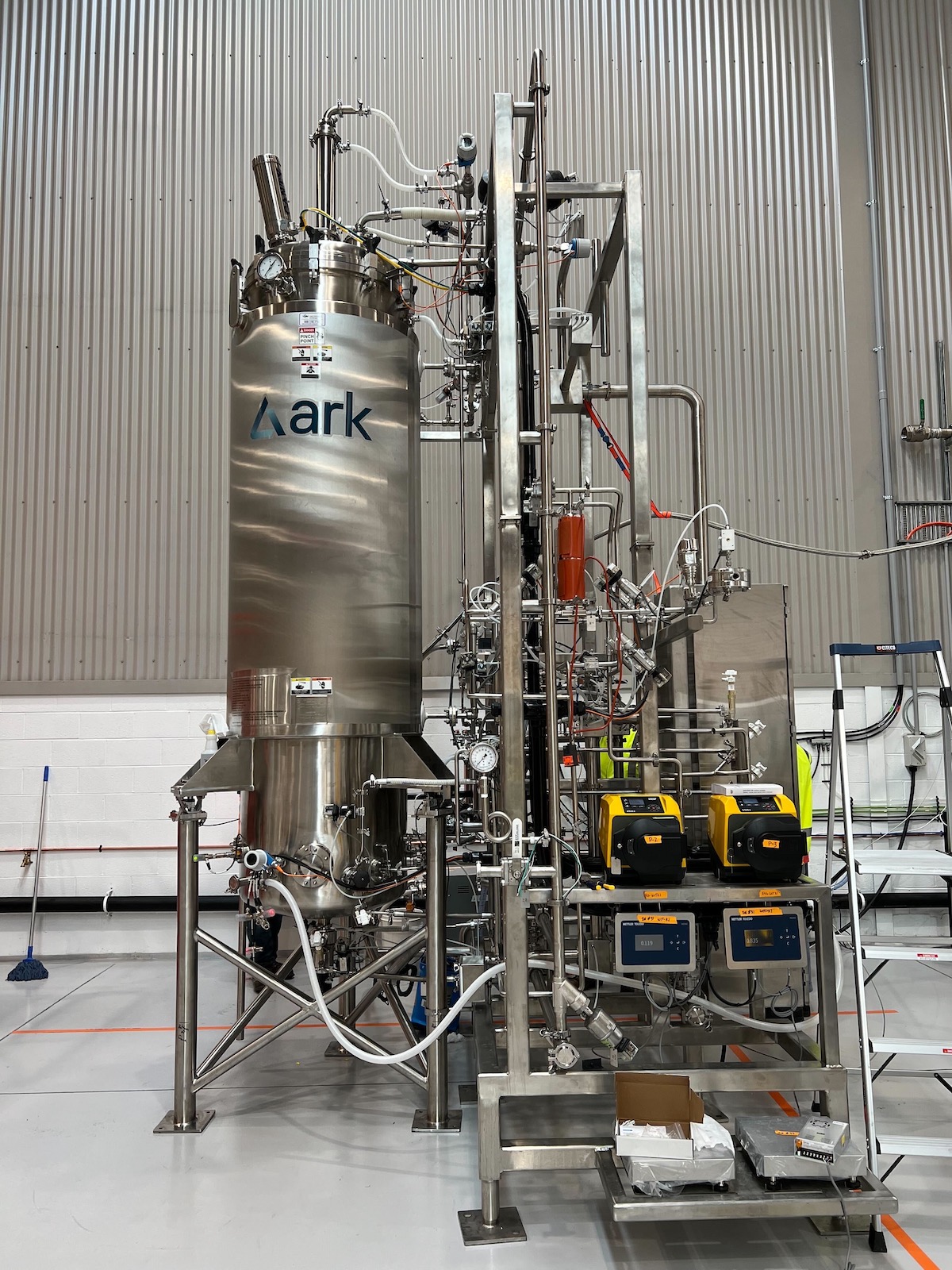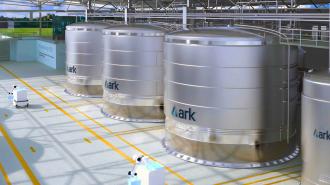To help cultivated meat companies scale up, Ark Biotech has built a new kind of bioreactor, and its most valuable components are data — and air.
The challenge: Lab-grown, cultivated, cultured, or clean — whatever you call it, meat grown from cells, not animals, has the potential to replace the slaughter of livestock and reduce climate emissions, without anyone giving up tasty chicken or steak. Win, win, win.
The problem is that while we already know how to make cultivated meat, we don’t yet know how to make a lot of it at a price that’s competitive with traditional sources of meat — and if we can’t figure that out, it’s hard to imagine cultured meat ever living up to its potential.
“We can make it on small scales successfully,” Josh Tetrick, CEO of Eat Just, told the Wall Street Journal in 2023. “What is uncertain is whether we and other companies will be able to produce this at the largest of scales, at the lowest of costs within the next decade.”
“We’ve systematically rethought the bioreactor.”
Yossi Quint
The startup: Yossi Quint (formerly an analyst at McKinsey) founded Ark Biotech to help solve cultivated meat’s scaling problem by rethinking the most essential piece of the production process: the bioreactor.
“We’ve systematically rethought the bioreactor and invented a bio manufacturing platform that predictably scales from bench to commodity scale while maintaining peak performance,” Quint told Freethink.
The machine: Bioreactors are containers that provide the ideal environment for cells or microorganisms to grow. They’re used to make everything from beer to vaccines, and now, scientists are loading them up with cells from living animals and substances that encourage cell growth to make meat.
The most commonly used type of bioreactor for cultivated meat production is a stirred tank reactor. It looks sort of like a big stand mixer, with a paddle-like device, called the “impeller,” spinning around at the bottom to mix up everything in the container — this ensures that nutrients are evenly distributed and encourages cell growth.
“Industrial meat production is broken in every way.”
Yossi Quint
According to Quint, it’s the reliance on these stirred tank bioreactors that’s creating a bottleneck in cultivated meat production.
“They just can’t get that big,” he said at ZERO, a quarterly climate tech event, in 2023. “At some point, this impeller requires so much energy that it’s terrible for the environment, but more importantly, it needs to spin so fast to create homogeneous mixing that it’s going to kill the cells.”
A better bioreactor: Ark Biotech has developed a bioreactor that uses vertical tubes and “airlift technology” to mix everything uniformly. To scale to larger quantities, you just add more tubes, and those are “really, really cheap,” according to Quint.
“At scale, our bioreactor is 90% cheaper than the biggest bioreactor in the world today,” he told attendees at Zero.
The team has also developed an operating system, called the “optimization engine,” that acts like a digital twin for the physical bioreactor. It allows the user to see what’s happening in it, simulate different scenarios, and then make real-time adjustments to more than 15 parameters to optimize performance.
Looking ahead: Quint told Freethink that Ark plans to launch an upgraded version of its bioreactor in the coming months, along with a new controller, but better bioreactors alone won’t be enough to end the world’s reliance on traditional sources of meat.

Cultivated meat might have much of the flavor of traditional meat, but it lacks its structure, and developers are still trying to figure out the best way to replicate the texture of actual cuts of meat, like steak or chicken breast, using cells grown in the lab. Public acceptance is another issue — some people might simply not want to make the switch to cultivated meat.
Ultimately, this isn’t a transition that’s going to happen overnight, but advances like Ark’s bioreactor could help bring us closer to a future in which eating meat doesn’t have to be a drain on the environment or an ethical dilemma.
“Cultivated meat is a use case that is especially dear to me,” Quint told Freethink. “Industrial meat production is broken in every way. Cultivated meat is real meat without those negative externalities.”
We’d love to hear from you! If you have a comment about this article or if you have a tip for a future Freethink story, please email us at [email protected].






